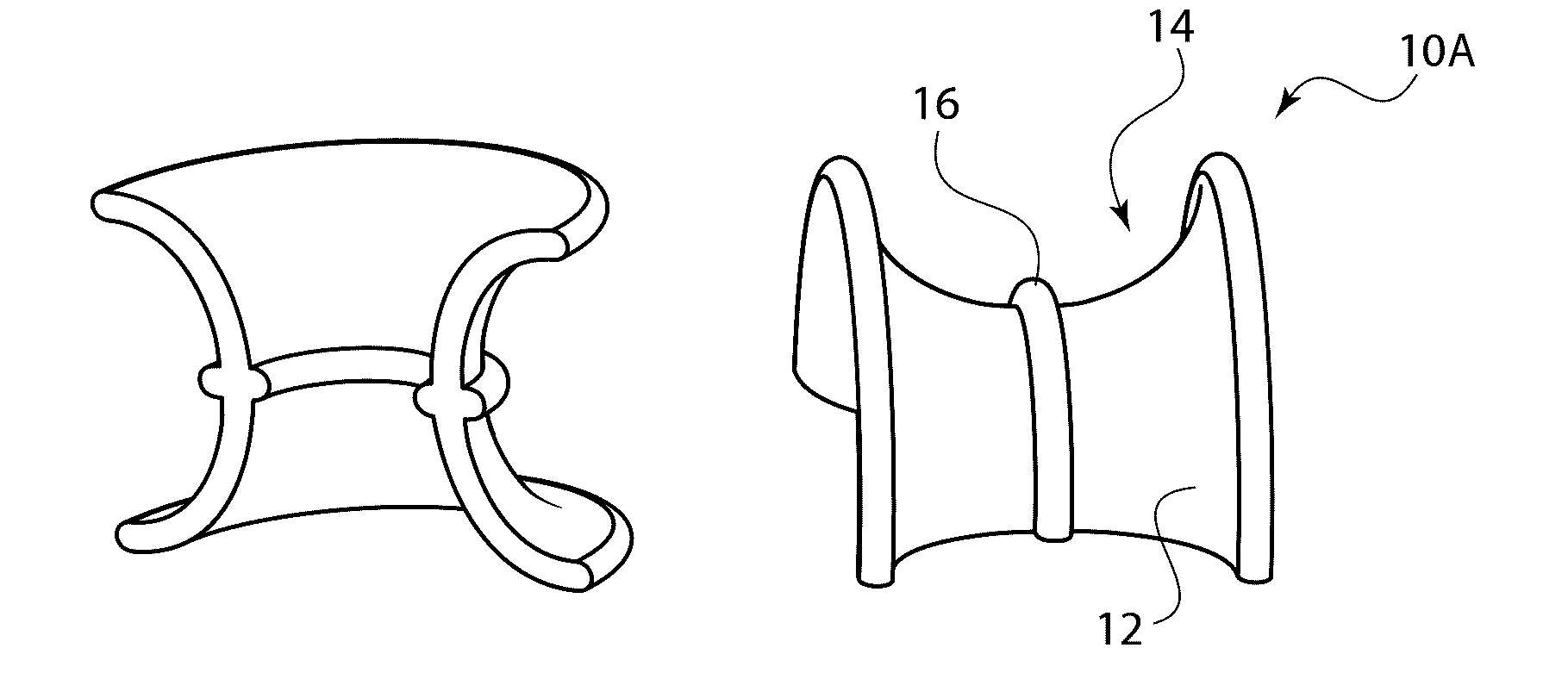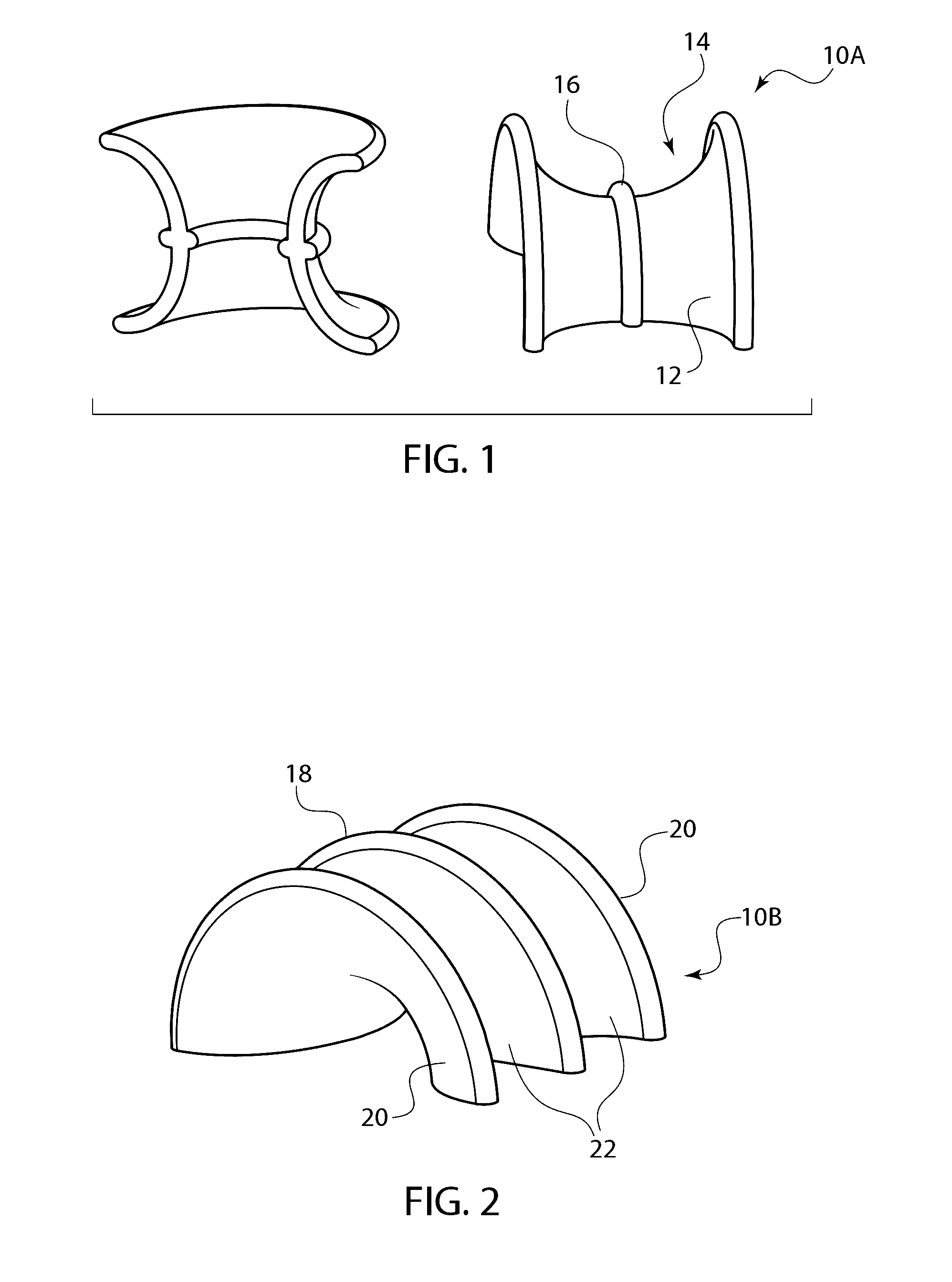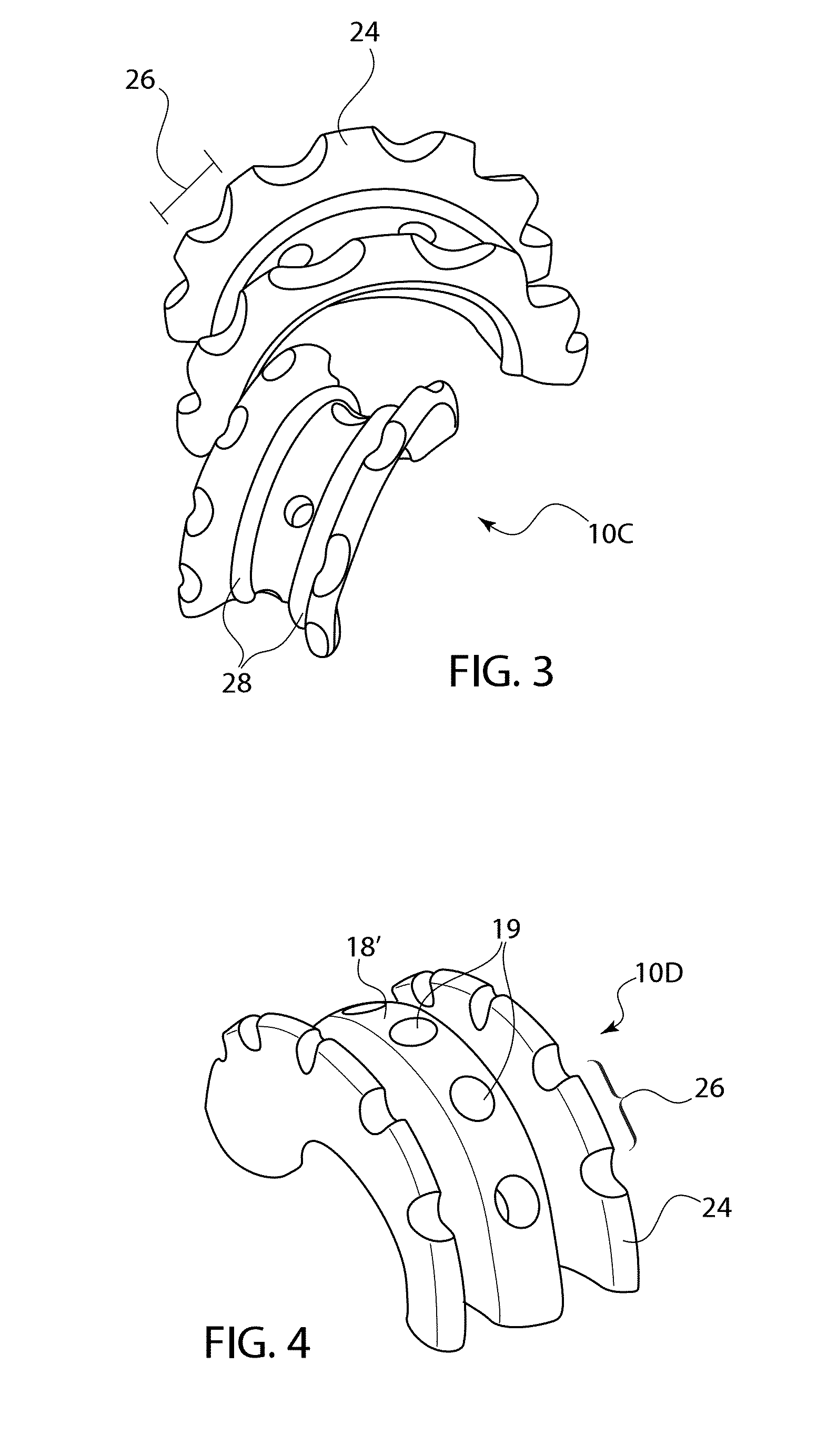Frangible components and their use in a system for energy absorption
a technology of energy absorption and component, applied in the direction of elastic dampers, ways, constructions, etc., can solve the problems of preventing economical compliance with the one thousand foot overrun requirement, affecting the safety of passengers, and affecting the safety of moving vehicles, so as to prevent serious injury or death, and achieve more cushion
- Summary
- Abstract
- Description
- Claims
- Application Information
AI Technical Summary
Benefits of technology
Problems solved by technology
Method used
Image
Examples
Embodiment Construction
[0026]Embodiments of the present disclosure provide improved materials for use in vehicle arresting systems. Improvements has been achieved through the modification of manufacturing processes, which include composition, porosity changes, and density changes. These changes are tailored to render a component or a plurality of components that can absorb energy upon impact, that remain in place upon impact, do not pose a high Foreign Object Debris (FOD) risk, and that are frangible or otherwise crush reliably. The materials may be used alone or they may be provided in a containment system, which may ease installation.
[0027]Specific embodiments provide an energy absorbing system that comprises a core of individual components that have a compressive strength that allows them to crush upon impact. The components may be interlocking components. The term “interlocking” as used herein may be used to mean that the components remain generally in a confined position when crushed and / or that they...
PUM
 Login to View More
Login to View More Abstract
Description
Claims
Application Information
 Login to View More
Login to View More - R&D
- Intellectual Property
- Life Sciences
- Materials
- Tech Scout
- Unparalleled Data Quality
- Higher Quality Content
- 60% Fewer Hallucinations
Browse by: Latest US Patents, China's latest patents, Technical Efficacy Thesaurus, Application Domain, Technology Topic, Popular Technical Reports.
© 2025 PatSnap. All rights reserved.Legal|Privacy policy|Modern Slavery Act Transparency Statement|Sitemap|About US| Contact US: help@patsnap.com



